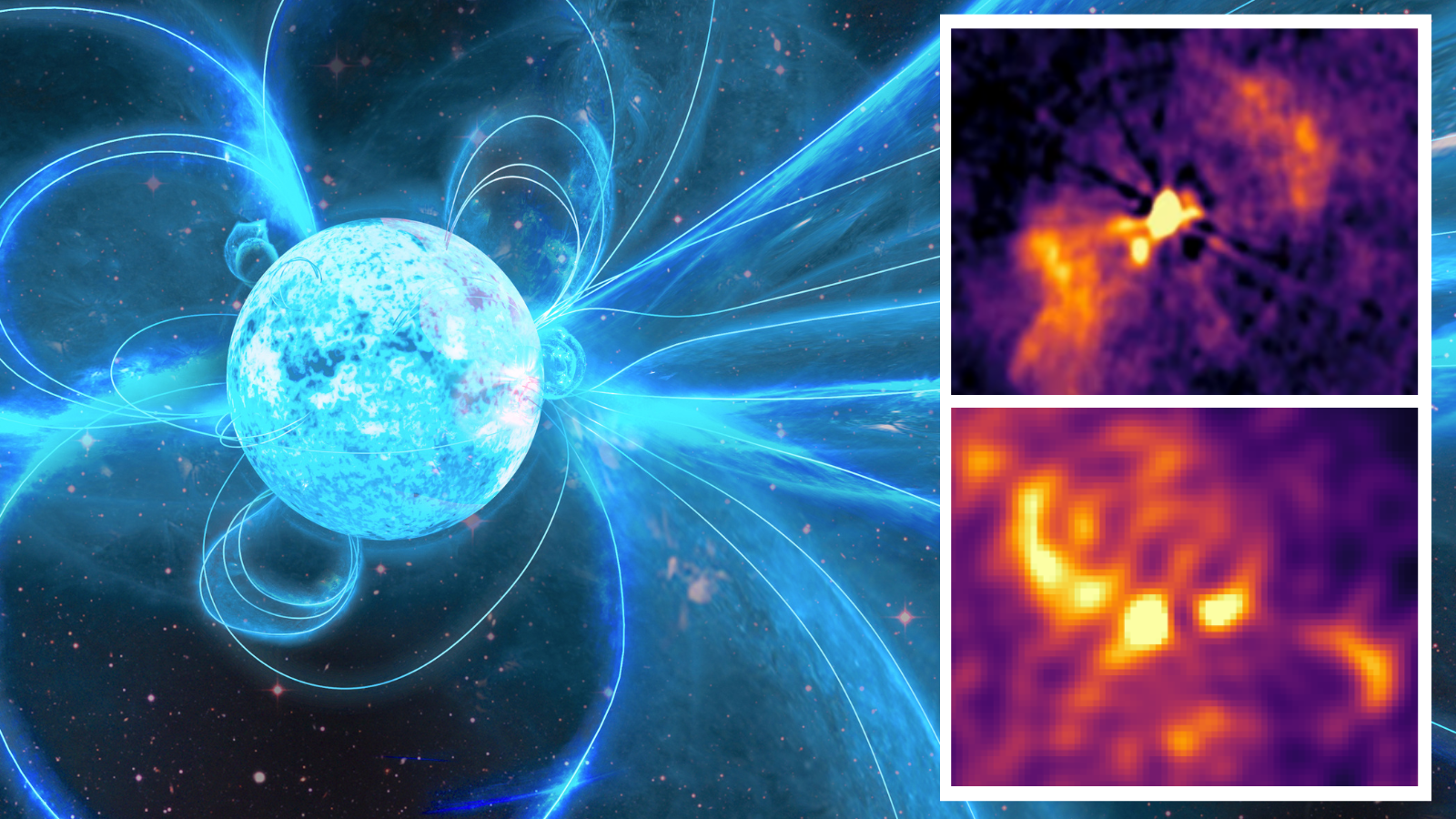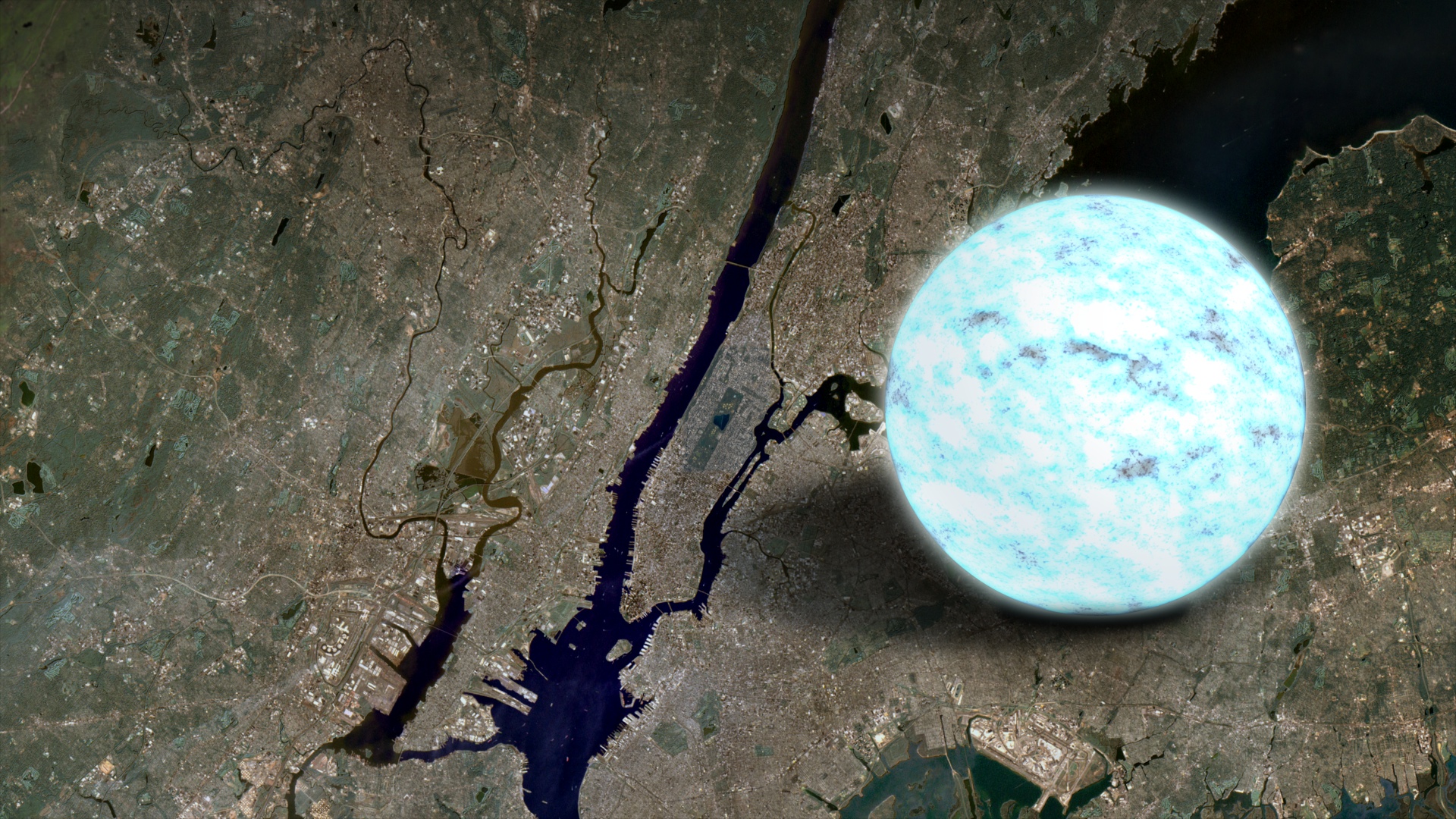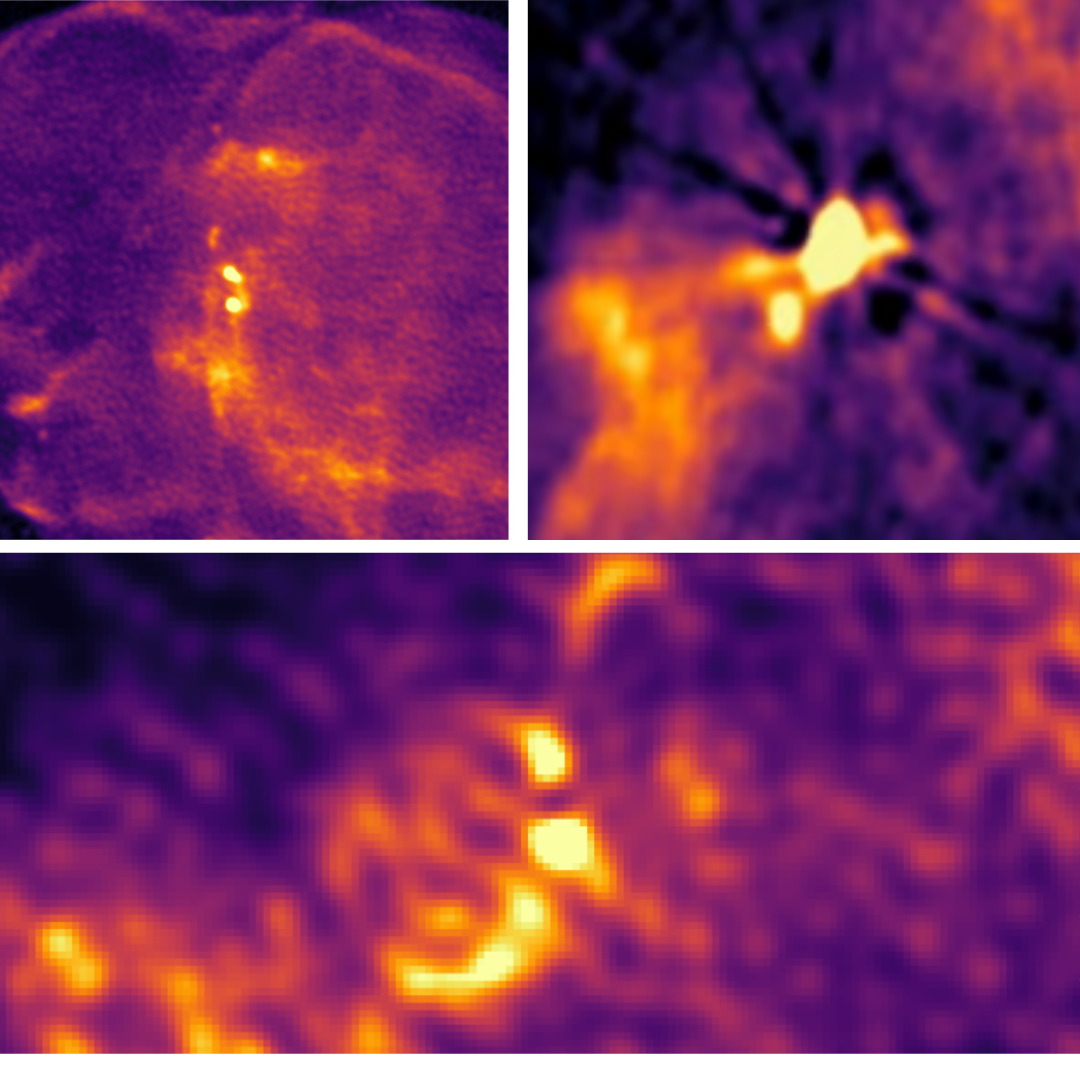Strange 'garden sprinkler' jets are erupting from a dead vampire star
"This will give valuable information about the extreme physics behind the launching of the jet, a phenomenon which is still not well understood."

Astronomers have imaged a strange S-shaped jet emerging from a neutron star for the first time ever. The weird emission suggests this dead star resembles the shape of water spraying from a garden sprinkler.
The "cosmic garden sprinkler" in question is a neutron star that sits in the binary system Circinus X-1, located more than 30,000 light-years from Earth. It was born when a star at least eight times the size of the sun died in a supernova explosion, the light from which would have reached Earth almost 5,000 years ago around the time Stonehenge was being built.
The neutron star is feeding on a companion star like a cosmic vampire, causing high-energy jets to erupt from it. These jets get an S-shaped formation from the fact that the vampire dead star is wobbling, or "precessing," like a spinning top as it feeds. The team behind the research hopes that this first-of-its-kind observation could help them better understand the extreme physics around neutron stars, which are found nowhere else in the cosmos.
The S-shaped jet was spotted by astronomers form the University of Oxford using the MeerKAT radio telescope located in South Africa. The data they collected was used to build the most detailed, high-resolution images of Circinus X-1 to date.
Related: 'Vampire' neutron star blasts are related to jets traveling at near-light speeds
"This image is the first time we have seen strong evidence for a precessing jet from a confirmed neutron star," team leader Fraser Cowie, a researcher at Oxford, said in a statement. "This evidence comes from both the symmetric S shape of the radio-emitting plasma in the jets and from the fast, wide shockwave, which can only be produced by a jet changing direction.
"This will give valuable information about the extreme physics behind the launching of the jet, a phenomenon which is still not well understood."
Get the Space.com Newsletter
Breaking space news, the latest updates on rocket launches, skywatching events and more!
Why is this neutron star acting like a garden sprinkler?
Neutron stars are born when massive stars exhaust their hydrogen, the fuel needed for nuclear fusion at their cores. This ends the outward push of energy (in the form of radiation pressure) that supports a star against the inward push of its own gravity. As this often billion-year-old struggle ends — with gravity emerging as the inevitable winner — the outer layers of the dying star are blown away in a huge supernova explosion.
Meanwhile, the core undergoes a gravitational collapse that crushes a mass equivalent to one to two suns down to a width of around 12 miles (20 kilometers). As a result, this newly born neutron star could fit into a standard city's boundaries on Earth, yet remain so dense that just a tablespoon of its material would weigh over 1 billion tons.
Plus, not all neutron stars are alone. Some exist in binary systems with companion stars. And if these stars are close enough to one another, then the neutron star can act like a cosmic vampire by stripping stellar material from its companion, or "donor" star.

The material stripped from the donor star can't fall directly onto the neutron star because it still has angular momentum, however. Instead, it forms a flattened cloud around the dead star that gradually feeds it, called an accretion disk.
The incredible density of neutron stars means that when this stolen material hits their surfaces, a tremendous amount of energy is released. In just a second, a feeding neutron star can release the same amount of energy the sun will release over the course of a million years.
Some of this energy is poured into jets of material that blast out from the neutron star at velocities equal to a significant fraction of the speed of light.

Observations of Circinus X-1 conducted in 2007 revealed the system is especially bright in X-rays and emits the kind of jets usually associated with black hole systems. This was the first time a jet of this kind had been seen emerging from a neutron star system defining such similarity to black holes.
As a result, Circinus X-1 became a peculiar system that defies conventional classification. Thus, it is of great interest to astronomers who use it to test their knowledge of accretion processes, jets themselves, and even the interactions of those jets with surrounding material.
Thus, the new study's team trained the recently upgraded MeerKAT radio telescope on Circinus X-1, hoping that its sensitivity could deliver more information about this fascinating system. They then attained high-resolution images showing clear evidence of an S-shaped structure in Circinus X-1's jet.
The team thinks these jets could have a unique shape due to the neutron star at its source "wobbling" like a spinning top as it begins to slow. "These shockwaves span a wide angle agrees with our model," Cowie said. "So we have two strong pieces of evidence telling us the neutron star jet is precessing."
Cowie and colleagues also detected shockwaves called "termination shocks" rippling through the surrounding material, generated when the neutron star's jets slam into it. This is the first time such an observation has been made for a binary system like this one.
But the smoking gun that indicates the shockwaves are generated by the jets is the fact they move at about 10% the speed of light. This extremely high speed could only be thanks to such high-energy jets. The shockwaves can actually act as "cosmic particle accelerators," generating streams of high-energy particles called "cosmic rays."
Further investigation of the velocity of the shockwaves could reveal what the jets that created them are made of.
"Circinus X-1 is one of the brightest objects in the X-ray sky and has been studied for over half a century," Cowie said. "But despite this, it remains one of the most enigmatic systems we know of. Several aspects of its behavior are not well explained, so it's very rewarding to help shed new light on this system, building on 50 years of work from others."
The next step for the team will be to monitor the jet to determine if they are changing over time as predicted or if this system has more surprises to deliver. "This will allow us to more precisely measure their properties and continue to learn more about this puzzling object," Cowie said.
These findings were presented at the Royal Astronomical Society's National Astronomy Meeting 2024 at the University of Hull on Monday (July 16).
Join our Space Forums to keep talking space on the latest missions, night sky and more! And if you have a news tip, correction or comment, let us know at: community@space.com.

Robert Lea is a science journalist in the U.K. whose articles have been published in Physics World, New Scientist, Astronomy Magazine, All About Space, Newsweek and ZME Science. He also writes about science communication for Elsevier and the European Journal of Physics. Rob holds a bachelor of science degree in physics and astronomy from the U.K.’s Open University. Follow him on Twitter @sciencef1rst.










